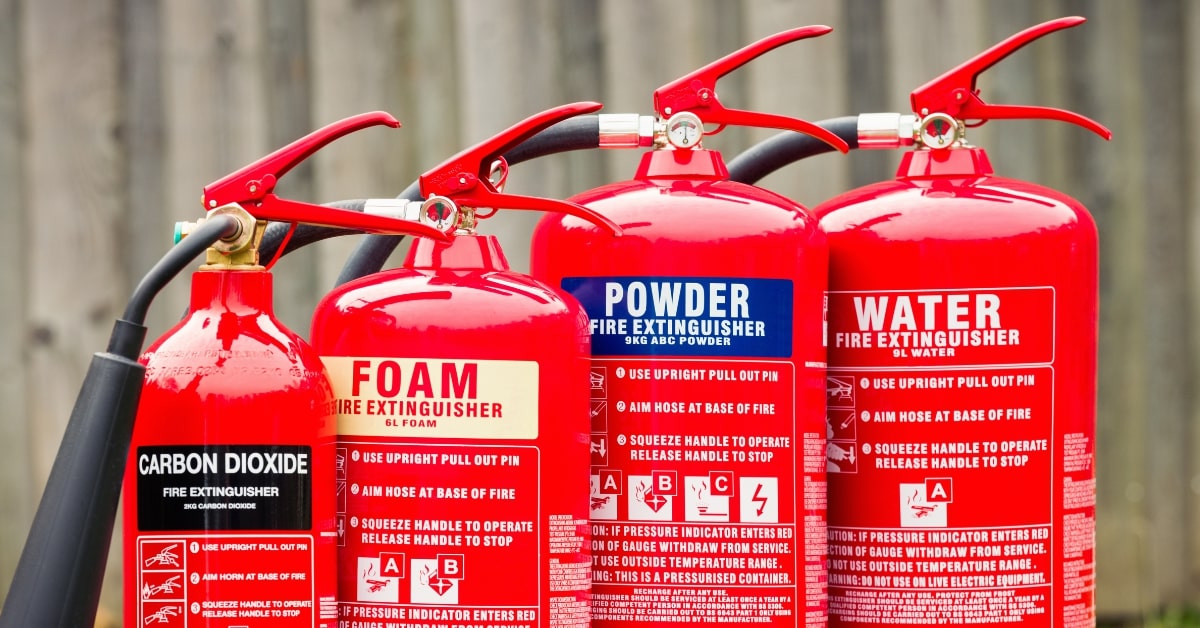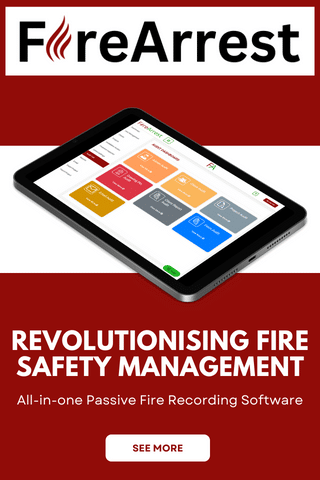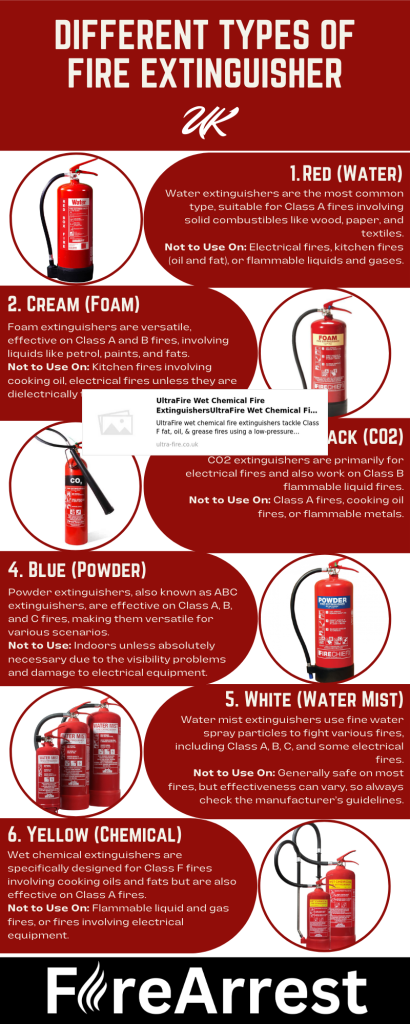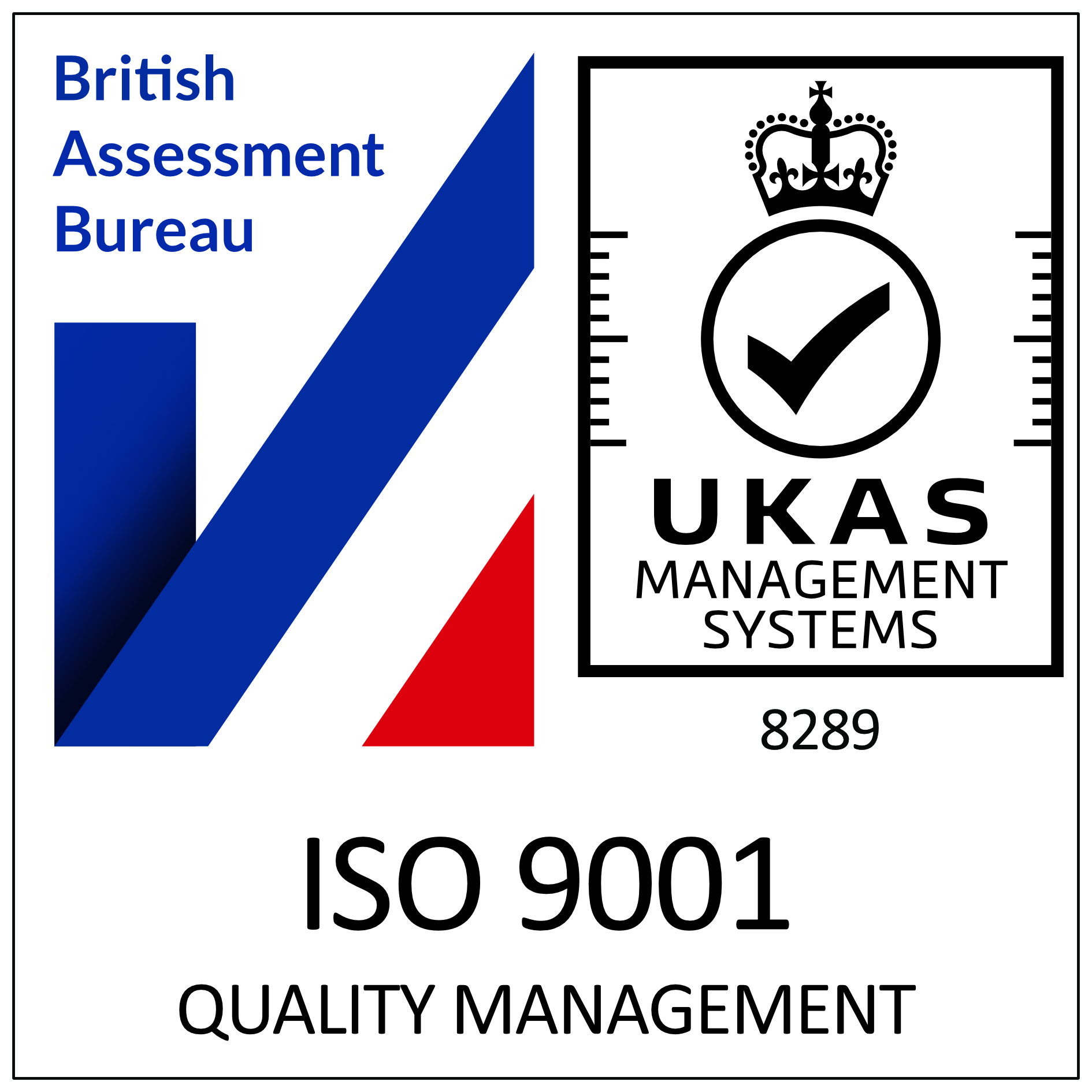Understanding the different types of fire extinguishers is crucial for ensuring safety in both domestic and commercial settings. Fire extinguishers are the first line of defence against small fires, and knowing which type to use can prevent a fire from spreading and save lives and property. Each type of extinguisher is designed to tackle specific classes of fire, and using the wrong one can be ineffective or even dangerous. This article provides a comprehensive guide to the various fire extinguishers available in the UK, their uses, and important safety considerations.

What are the Fire Extinguisher Types?
Understanding the different types of fire extinguishers is essential for effectively responding to various fire emergencies. Each extinguisher is designed for specific fire classes and scenarios, making it crucial to recognise and use the appropriate one for safety and efficacy.







